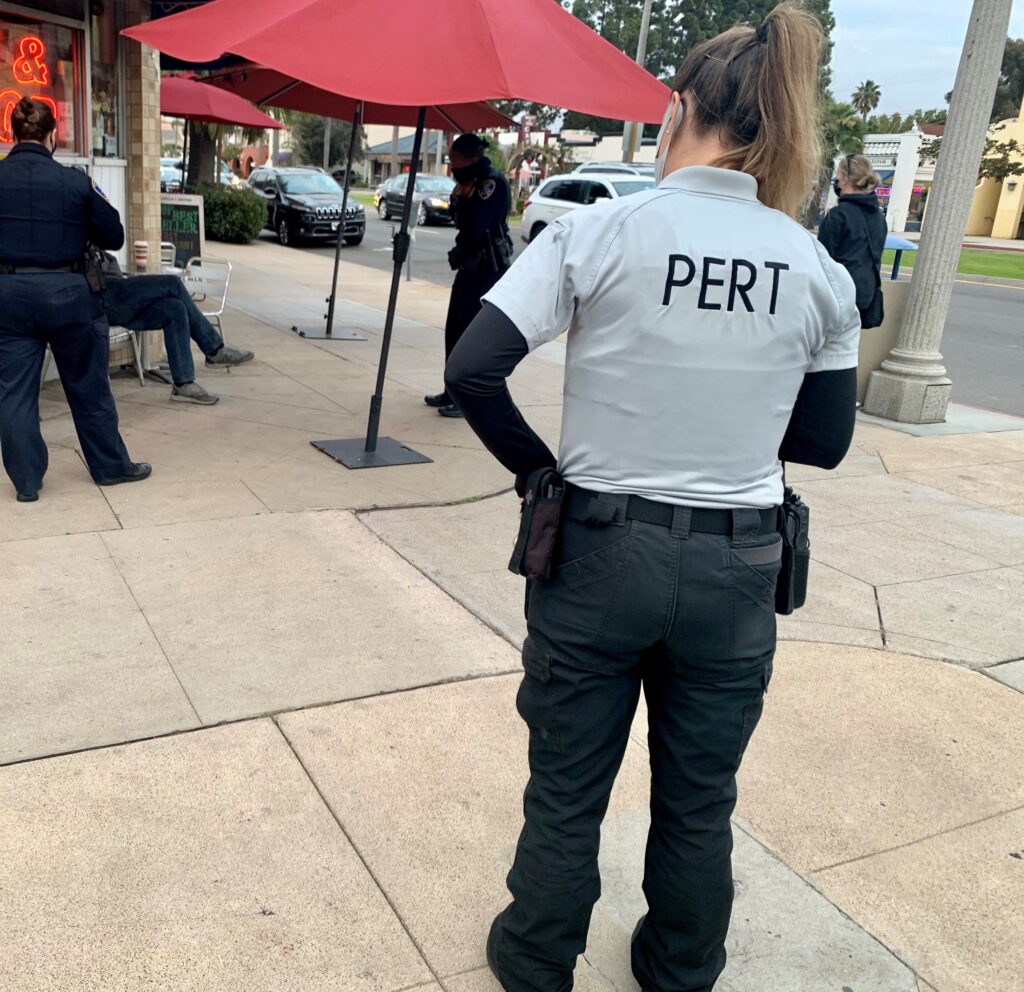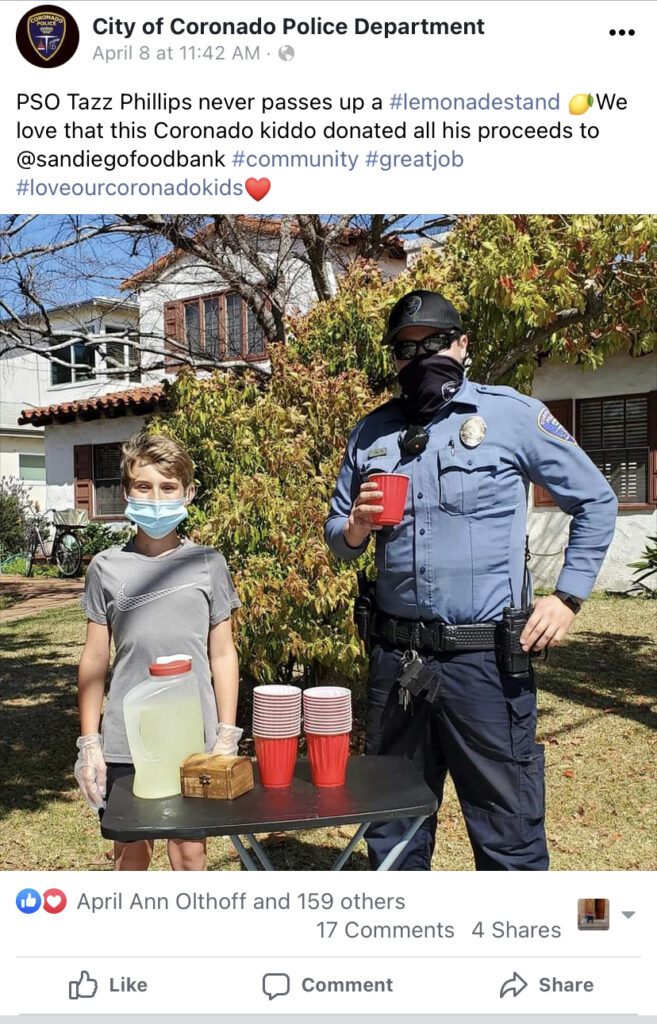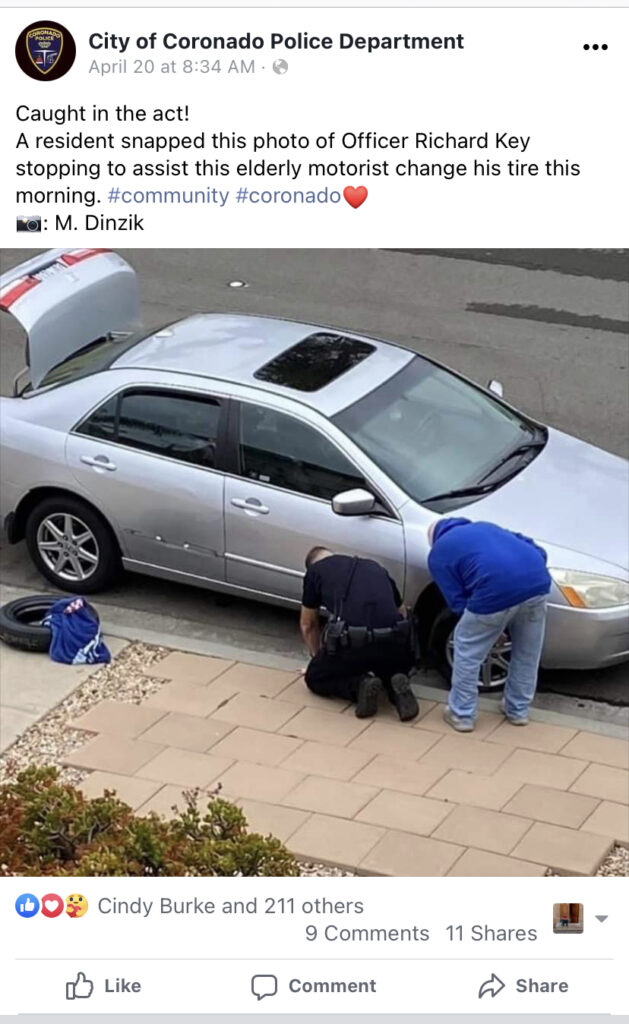All images courtesy of the Coronado Police Department
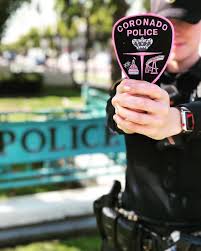 There are 46 Coronado Police Department (CPD) Officers that serve the City of Coronado and our community. CPD is unique in that officers provide a wide range of services which many other police departments don’t. Not only are they responsible for the 26,000 residents, but also the additional 30,000 military personnel and 100,000 commuters that pass through town on a daily basis.
There are 46 Coronado Police Department (CPD) Officers that serve the City of Coronado and our community. CPD is unique in that officers provide a wide range of services which many other police departments don’t. Not only are they responsible for the 26,000 residents, but also the additional 30,000 military personnel and 100,000 commuters that pass through town on a daily basis.
“At CPD, we make it a priority to see what the needs are in our community and then respond accordingly,” comments Police Chief Chuck Kaye. In listening to what residents want, he cites that preserving the quality of life is a high priority to them, and that is accomplished in a myriad of ways. CPD officers patrol throughout the community by foot, bicycles, motorcycles, and cars and greet many residents by name. CPD officers generally arrive within minutes after being called.
All officers are specially trained Psychiatric Emergency Response Team (PERT) officers, and take their responsibilities very seriously, while striving to maintain respect and keep the peace. They have to be prepared for anything on a moment’s notice, from dealing with suicidal individuals on the bridge, arresting drug dealers, to helping find lost children and sometimes adults, stolen bikes and other items, enforcing traffic rules for safety, assisting with injured animals, just to name a few of the diverse calls to which they respond. They also fill in when needed for school crossing guard duty, help direct traffic when a fire hydrant gets hit or other hazards occur, and provide security at events. They have helped residents with burst pipes and enjoy handing out ice cream gift cards to reward kids for wearing bike helmets.
Chief Kaye answered some community questions regarding behavioral health training, PERT Academy, biased-based policing and more.
Can you walk us through how CPD is doing with behavior health issues this year compared to years past?
CPD has maintained our commitment to employing tactics and resources to effectively interact with those experiencing behavioral health issues. CPD mental health related calls for service the past few years are as follows:
2016: 125
2017: 192
2018: 181
2019: 157
2020: 137
In 2020, we transported 90 individuals based on their inability to care for themselves or others to a facility for evaluation. PERT Clinician Elizabeth Peters made the determination in 45 of the 90 cases. The City has acquired access to one room at St. Vincent de Paul’s and is finalizing access to a second room. “Engaging with individuals is one of the most important aspects of our jobs, for diffusing potentially dangerous situations,” emphasizes Chief Kaye.
How has the pandemic impacted calls or how CPD interacts with people in crisis?
Chief Kaye points out that every one of us have experienced the pandemic differently. All of us know people who have been impacted. Some have been impacted by the loss of a loved one or friend, some financially, others by a sense of isolation and others in different ways.
Each of us can likely describe a friend or family member that has been impacted. And each of us can describe how the changes over the last year have impacted us personally. The members of the Coronado PD are no different. I would hope that as a result of our collective experiences, we are all more empathetic and patient with one another.
CPD hasn’t tracked specific “pandemic calls.” Officers always work to educate tourists and residents on things like having dogs off leash and other safety issues, and this has been especially true during the pandemic, when they patrolled in the business district handing out masks, with the goal of keeping people safe, not being punitive or closing down businesses. Officer Grace Del Bagno gave passes to the skate park to teens who were skateboarding in alleys, to give them a safe place to go. Chief Kaye emphatically states that “CPD doesn’t measure success by the number of tickets written, but rather in the safety statistics on reduced number of accidents.”
Dispatch activity went up from 2019 to 2020, including a 5.33 percent increase in 911 calls, a 5.6 percent increase in non-emergency calls, a 4.71 percent increase in calls placed, and 2.91 percent increase in overall calls for service. Total calls for service in 2020 were 18,469 and 2019 had 17,947 calls.
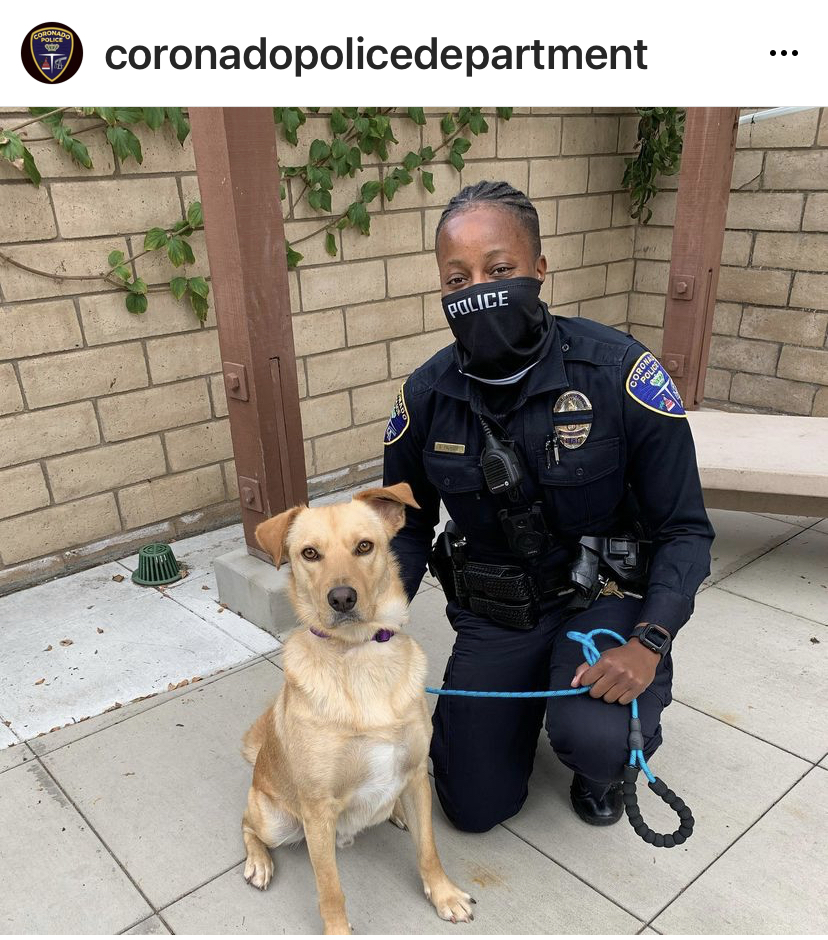
Can you describe the PERT Academy and how CPD officers and our community benefit?
The PERT Academy consists of three days of training where participants are provided a broad foundation regarding behavioral health challenges, co-occurring disorders, substance abuse, alcohol issues and best practices for interacting with people who may have a behavioral health challenge. Our community has benefited and continues to benefit from all of our officers being trained and our full-time PERT Clinician.
Chief Kaye refers to the San Diego PERT Academy website:
PERT training is designed to facilitate understanding of effective and compassionate response to persons in crisis while ensuring safety, including appropriate service care referrals. PERT training is certified by the California Commission on Peace Officer Standards in Training (POST).
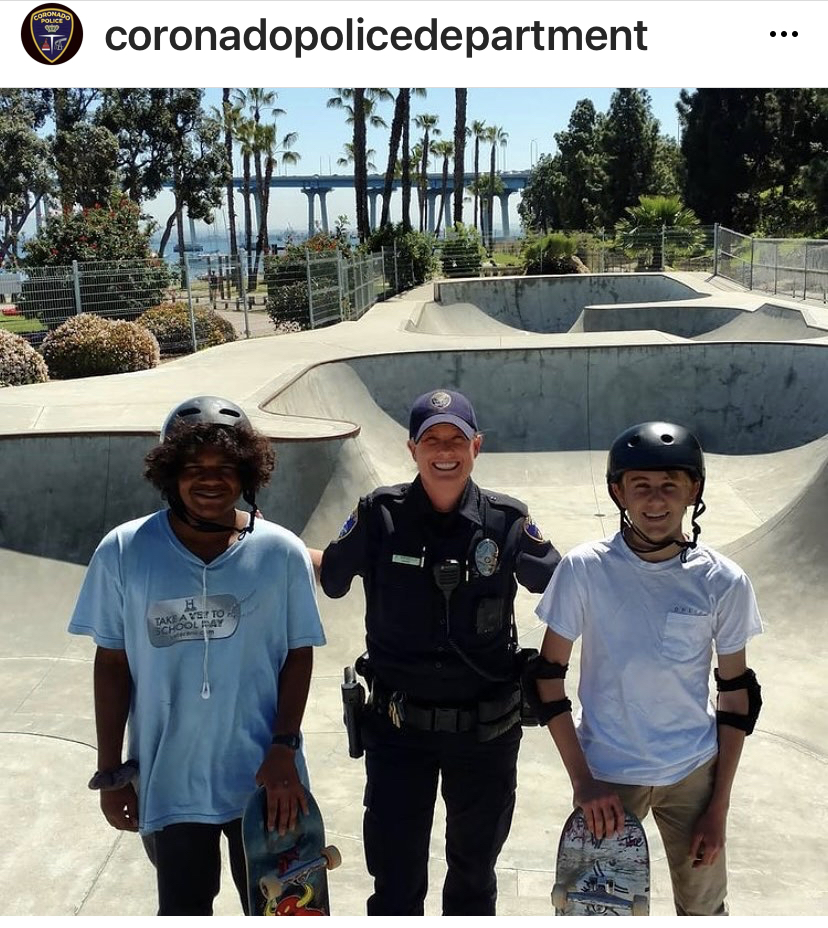
Can you talk about biased-based policing and how CPD is training officers and how they are doing in the field? The discussions and concerns around biased-based policing have been part of the landscape in California policing for some time now. We are investing in Third Option City training this year. This training was developed from Pastor Miles McPherson’s book entitled, The Third Option. I was impressed with, and related to, the concepts in the book. The ideas around the in-groups and out-groups resonated with me.
The police department leadership attended an orientation regarding the secular version of the training. We all agreed it was something we could all benefit from. With the support of the city, we have committed to training the police department and then potentially other city employees.
Can you discuss use of force cases?
Our department uses very little force, when you look at the number of interactions and arrests our officers are involved in. In 2019, there were 16 uses of force and in 2020, there were 14 uses of force, with every case reviewed. With the passage of AB 392 and SB 230, we, along with all other agencies in California, have made the required adjustments, implemented training to focus on getting the best information at the beginning, on pre-planning, identifying resources and implementing with the focus on effective communication, resulting in cooperation.
Use of force has changed through the years. Previously, when a suicidal person barricaded themselves in their home and wouldn’t come out, police officers would often force entry into their living space. Now, police officers will talk to the person and ask if they can send assistance. If the person is alone and not a danger to others, some officers will likely walk away to avoid escalating the situation.
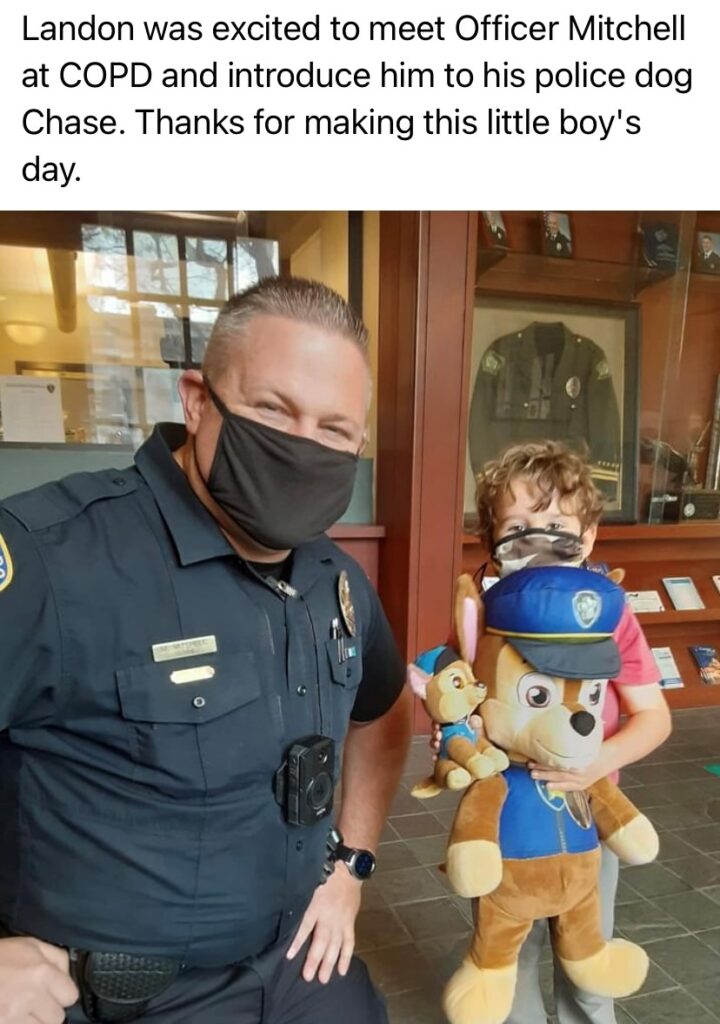 What happens when a CPD officer doesn’t follow procedure or makes an incorrect decision in a situation?
What happens when a CPD officer doesn’t follow procedure or makes an incorrect decision in a situation?
It is important that everyone understands that we take complaints. If a member of our community thinks we could or should have done something differently, we want to have an opportunity to discuss the incident. In most cases, when we learn of a concern and have a discussion with a member of our community, the concern is usually resolved. Accountability is important for all of us.
There are several layers to help ensure we are doing things right with every interaction. Our officers wear body cameras, and we inspect their use. We have sergeants, corporals, and officers in the field, and they are expected to hold their subordinates and each other accountable. We have a complaint process that we follow. In 2020, CPD received 18,469 calls for service, officers conducted 8,904 traffic stops, made 98 felony arrests, and 544 misdemeanor arrests (citations and physical arrests), and the department investigated four formal complaints. Two of the complaints were exonerated, one was unfounded, the other is pending, while the complainant’s case is adjudicated.
If a member of the department, regardless of a formal complaint, is having a performance issue, there can be any number of approaches. Depending on the totality of the circumstances, the remedy may be coaching, training, or formal discipline. Our members are our most valuable resource. And we work to be as proactive as we can to provide the training, equipment, and policies to support their success. Our community, the city, and the City Council are always supportive and expect us to deliver public safety services in a professional and humanistic manner.
Committed to protecting and serving the unique needs of the community, whatever may arise, CPD appreciates and is humbled by the many ways the community supports them from greeting them on the street, taking time to write a thank you note, or dropping off goodies at the station. Chief Kaye commends his officers for their dedication to keeping the community safe and says, “It all comes down to working together. We strive to deliver quality service in a personal way.”
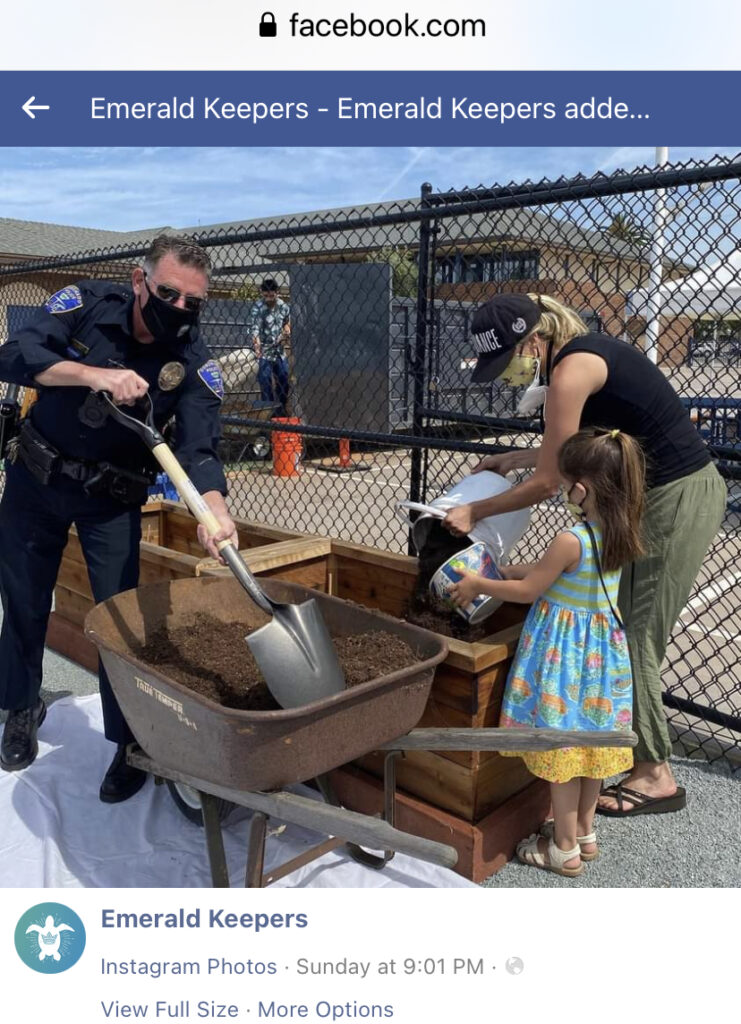
Related:
Articles from our Behind the Badge series on the CPD can be found here.




